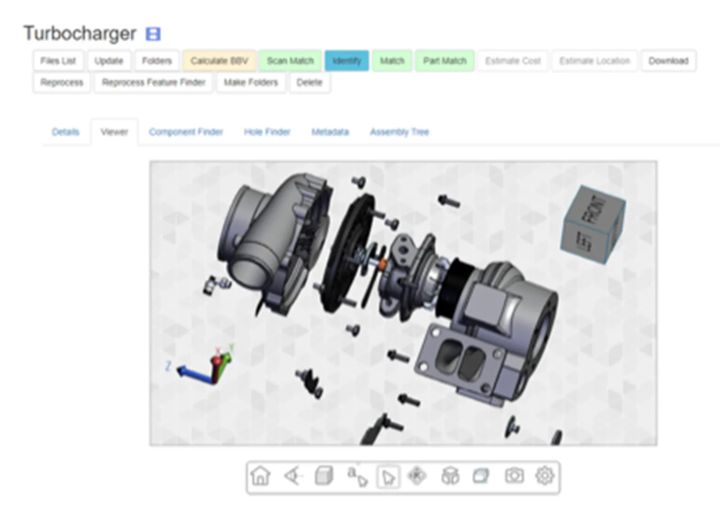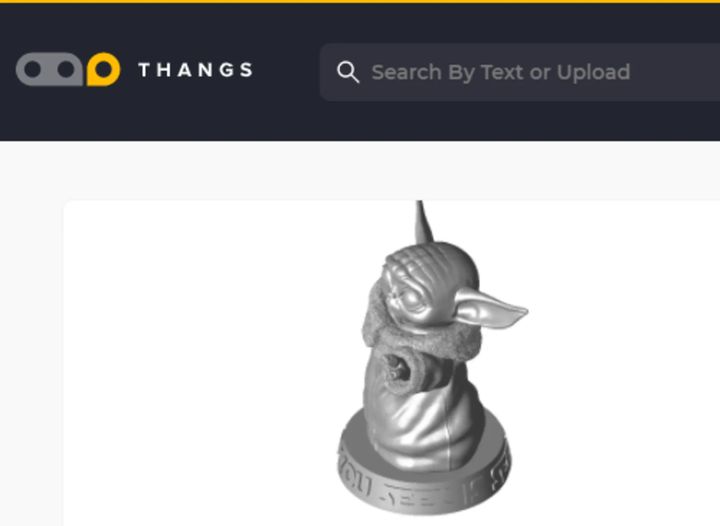
You may not know that you need a search engine for parts.
You probably didn’t know that you needed a search engine for words, either—until Google came along.
Similar to Google, a new geometric search engine by Physna called Thangs will “autofill” your search. You can partially create a design and Thangs will find the rest of it, says Paul Powers, Physna’s CEO and co-founder. And that’s not all. You can start roughing out a shape for a part and Thangs can remind you that you made a part like it and then show it to you. Thangs will see if the part you need exists in another product in your company’s portfolio. You will not be reinventing the wheel. Next, Thangs will sniff around suppliers’ catalogs so you can order the part.
You will be free to move on with your brilliant design—your company’s next big hit. What engineer wouldn’t sell his soul for that?
You don’t have to, says Powers. Thangs is free.
A Brief History of Geometric Search

Design search engines have come—and gone. We made an extensive listing of search applications in 2015. Since then, we have looked at CurvSurf in 2016 and Model Search in 2018.
They don’t work, says Powers, dismissing the lot of them.
“I started this company because I tried every geometric search engine. Geometric search looks at models like a 2D projection. They more or less take snapshots. They understand edges, points and volumes from CAD data. They can’t work with 3D scan data; they can’t work with agnostic models; they can’t find parts within parts.”
And so, part searches continue to be manual and text-based, such as searches for standard parts like mechanical fasteners, electrical components or building hardware. But the bulk of the parts in everything are nonstandard, and a usable, Google-like geometric search for an arbitrary shape has remained elusive.

DNA Is Part of Physna’s DNA
The company’s name Physna is a portmanteau, from “physics” and “DNA.” Physna has secured $6.9 million from one investor, but $8.9M in total. It has paying customers—most of whom Powers was careful not to reveal.
Physna is entirely based on extracting what it calls the DNA of a part—its own creation of a unique identifier of a part’s geometry that recognizes meaningful features of the part and its geometry and their relationships to each other. This part DNA can be used to match a part with other parts whose DNA has already been cataloged.
Like biological DNA, Physna’s part DNA is a set of stored information that is unique to a shape. Like biological DNA that uses molecules called chromosomes to map the detail of the cell and the organism, Physna’s DNA does the same with an identifier made of digital data.
This is an approach unlike the many geometric search engines to date, which rely on pattern matching, such as comparing the profile of a part to a library of stored profiles. Such a technique records a “hit” if the profiles match, but in order for that to happen, the profiles have to be in identical orientations. But creating, storing and matching all the possible profiles is a Herculean task. Considering only the three major axes and rotating the part in 1-degree increments about each of them gives us 3603, or 46,656,000 profiles. If the orientation is arbitrary, that is, not along the major axes, which is what you would want for an automated search, the number of orientations is unbound.
That approach never made sense to Powers.
Read more at ENGINEERING.com
